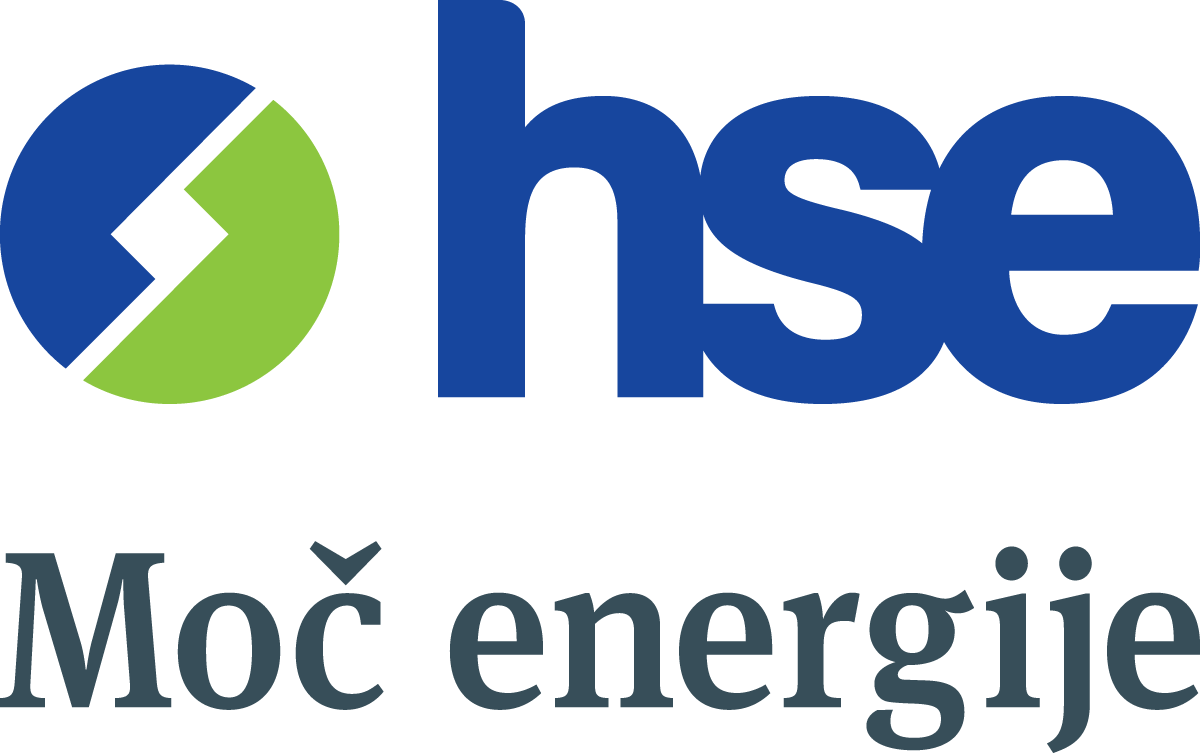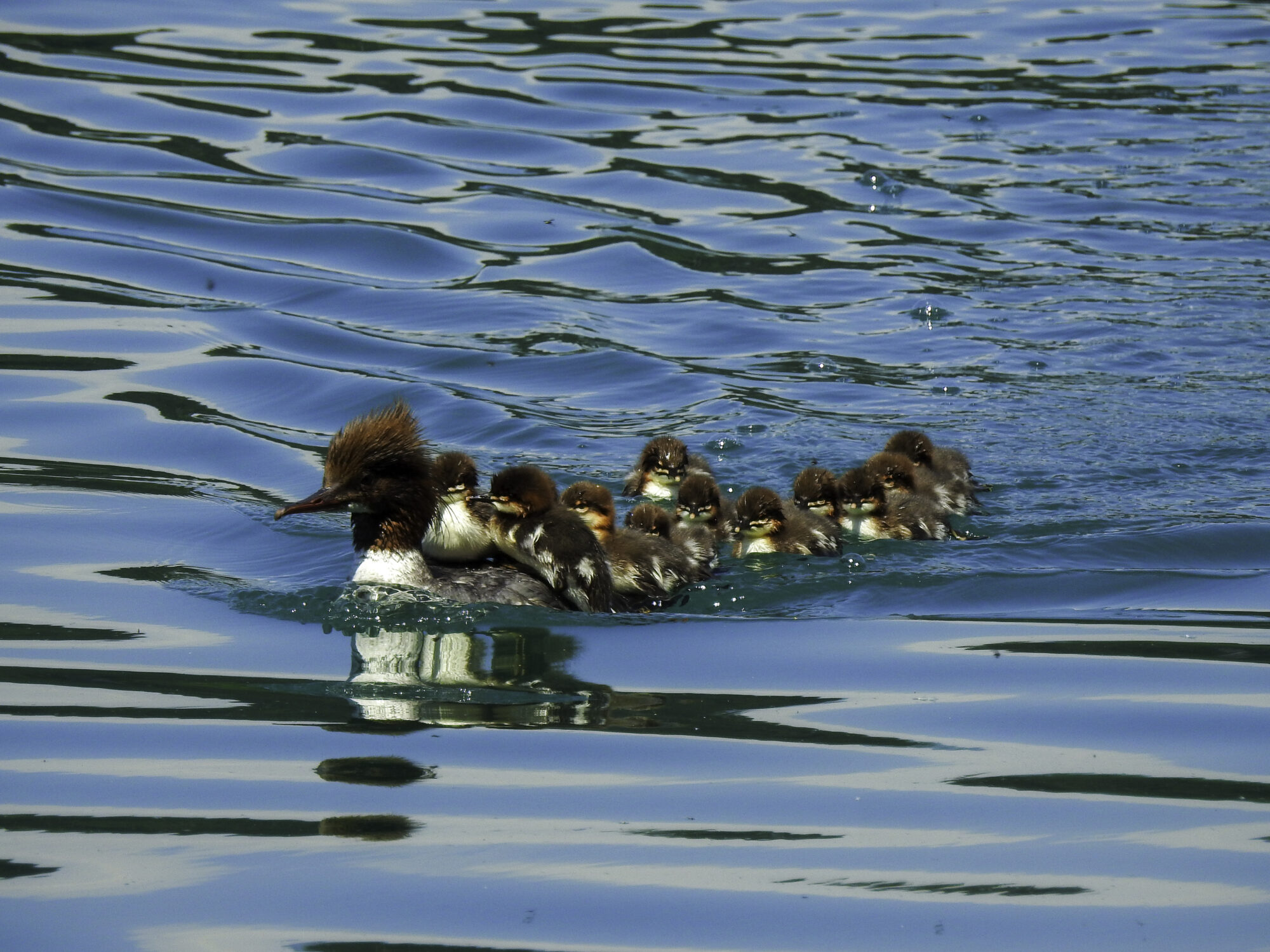The HSE Group is the largest producer of electricity from renewable sources in Slovenia, and the spearhead of the country’s green transition to a carbon-free society. Renewable energy sources account for approximately half of the entire production portfolio of the HSE Group, which at the national level on average produces more than two-thirds of all environmentally friendly electricity. In addition, since 2010 we have reduced carbon dioxide (CO2) emissions by approximately 1,400,000 tonnes, or as much as 30% and sulphur dioxide (SO2) and nitrogen oxide (NOx) emissions by 75%.
The hydro power plants of the HSE Group are the best example of environmentally friendly electricity production. There are more than forty plants, with some having successfully coexisted with the environment for more than a century. On the Drava, Soča and Sava rivers, our companies constantly improve the ecological potential of reservoirs, revitalise the banks of reservoirs, provide drinking water, develop the confluence areas of tributaries, build habitats for birds, ladders for aquatic organisms, gravel barriers, small wastewater treatment plants and remove driftwood, thereby contributing to the natural environmental balance. All this is also the basis for developing tourist and recreational activities on and along the rivers. By regularly maintaining the energy infrastructure, the companies DEM, SENG and HESS also ensure flood safety to the adjacent residential, agricultural and other land and contribute to the environment in the form of sport and recreational, fishing and tourist activities.
Dravske Elektrarne Maribor (DEM) has removed approximately 325,000m³ of sediment from the reservoir of the Zlatoličje Hydro Power Plant (Lake Ptuj) in the last decade and will continue with this activity in the future. More than 200 species of birds have a permanent or occasional habitat on the lake and along its shores and there are small islands on the lake intended for these birds Downstream from the Markovci Dam, in the corner between the Drava and Dravinja riverbeds on the right bank of the Drava, around 90 species of birds nest in the Šturmovci Landscape Park, which is also a habitat for dragonflies and butterflies and more than 500 plant species. Extensive parts of the floodplain on the Hungarian side of the Drava River are protected as part of Danube-Drava National Park. Protected in the park are diverse habitats with rich flora and fauna, from gravel bars in the riverbed, to wetlands, oxbow lakes with blind river branches, flooded forests and marsh meadows. Each year, maintenance work is also performed on the most critical sections of the riverbed, thus increasing the flow profile, which is favourable for flood safety. At the same time, the riparian flora and fauna is being preserved and developed. Important wetlands with diverse flora and fauna have been created around Lake Dravograd, an artificial lake created by the dam of the Dravograd Hydro Power Plant. There are important spawning grounds for fish in the lake, and more than 150 species of birds have the permanent or occasional habitat, while a colony of beavers has also found a home there.
Soške Elektrarne Nova Gorica (SENG) also takes into account the principle of multi-purpose hydropower facilities in the utilisation of the hydro power potential of the Soča and its basin for energy and makes sure that the production of electricity brings positive effects on the development of other activities in the area. Built in 1989, Zadlaščica Hydro Power Plant is a fine example of the siting of a commercial facility in the sensitive natural environment of Triglav National Park, while at the same time it is a multi-purpose facility, as it provides drinking water for the broader area of Tolmin and Most na Soči. The small hydro power plant Tolmin is also a multi-purpose facility, as it coexists with a fish farm. The covered ponds of the fish farm are intended for the breeding of grayling, which, in addition to Soča trout, is introduced to the watercourses of the Posočje region by Tolmin Fishing club, while at the same time it is a water catchment area for the small hydro power plant Tolmin.
The multi-purpose project of the chain of hydro power plants on the lower Sava River, implemented by the company Hidroelektrarne na Spodnji Savi (HESS), also enabled a more intensive sustainable utilisation of the hydro power potential and the riparian area of Sava River, while flood safety was ensured and the infrastructure in the area was developed during the construction of hydro power plants. In planning, constructing, operating and maintaining facilities, the HESS company pays particular attention to animal and plant species and to the established nature conservation developments on and along run-of river reservoirs. These are artificial islands, nesting rafts, fords with reed beds, ladders for aquatic organisms, natural drainage channel and others. The highlighted developments are also intended for the nesting of endangered bird species. They are used as a habitat by water birds (e.g. the Eurasian coot, common moorhen and mallard) and various species of frogs. Grey and white herons, ruffs and little ringed plovers stroll on the shores of run-of river reservoirs, looking for food in the fords. With the rise of the groundwater level, the Struga and Močnik streams near Brežice Hydro Power Plant also came to life. Red-backed shrikes field sparrows, Eurasian tree sparrows, common chiffchaffs, several species of wagtails and other birds, warblers, marsh warblers and kingfishers can be observed along the Močnik. In addition to birds, it is also being increasingly used as a habitat by the beaver. By performing regular maintenance work on the nature conservation developments in the area of run-of river reservoirs, the company HESS increases the number of nesting pairs or, by improving the conditions for nesting, attracts birds that have not been seen in this area before. It also regularly removes driftwood and invasive alien plant species, which are one of the biggest threats to biodiversity, thus limiting their spread in the area of run-of river reservoirs. Caring for biodiversity and the environment is one of the most important goals of the HESS company, to which it has been committed since the very beginning.
The thermal energy department of the HSE Group has also carried out numerous activities that reduce the group’s environmental impact. By replacing the old units of the Šoštanj Thermal Power Plant (TEŠ) with Unit 6, which is equipped with the most modern flue gas treatment devices, the TEŠ has contributed since the start of the operation of Unit 6 to the reduction of the concentrations of SO2 from 400 to 100mg/m³, of NOx from 500 to 150mg/m3 and of dust from 50 to 10mg/m³. Unit 6 also contributes to approximately a 30% reduction in specific CO2 emissions from electricity produced. In the long term, it thus also contributes to the reduction of coal consumption. The concentrations of NOx in Unit 5 also decreased, specifically from 500 to 200mg/m³. With the optimisation of the flue gas desulfurization (FGD) device, Unit 5 of the TEŠ contributed to the reduction of SO2 from 400 to 200mg/m³. In addition, by moving silt from the western part of Lake Družmirje, the TEŠ improved the conditions for fish spawning, and by renovating the water pumping station in Topolšica in 2021 by installing a modern control system, the TEŠ reduced the consumption of spring water by approximately 25%.
In the coming period, the HSE Group will play a key role in the green transition of the Slovenian energy sector and, consequently, the entire country. It will primarily focus on investments in carbon-free sources of electricity and measures to reduce greenhouse gas emissions and to strengthen the circular economy, while creating jobs, transitioning to a climate-neutral economy by 2050 at the latest, and ensuring reliability of supply and energy self-sufficiency. To achieve these goals, it will significantly accelerate projects in the field of hydro, solar, wind and geothermal energy. Carbon dioxide emissions from the production facilities of the HSE Group will continue to decrease with the development and implementation of investments in renewable energy sources. The largest leap in the reduction of CO2 emissions will be recorded after 2033, when coal phase-out and the consequent cessation of the use of lignite in the production of electricity is planned.








